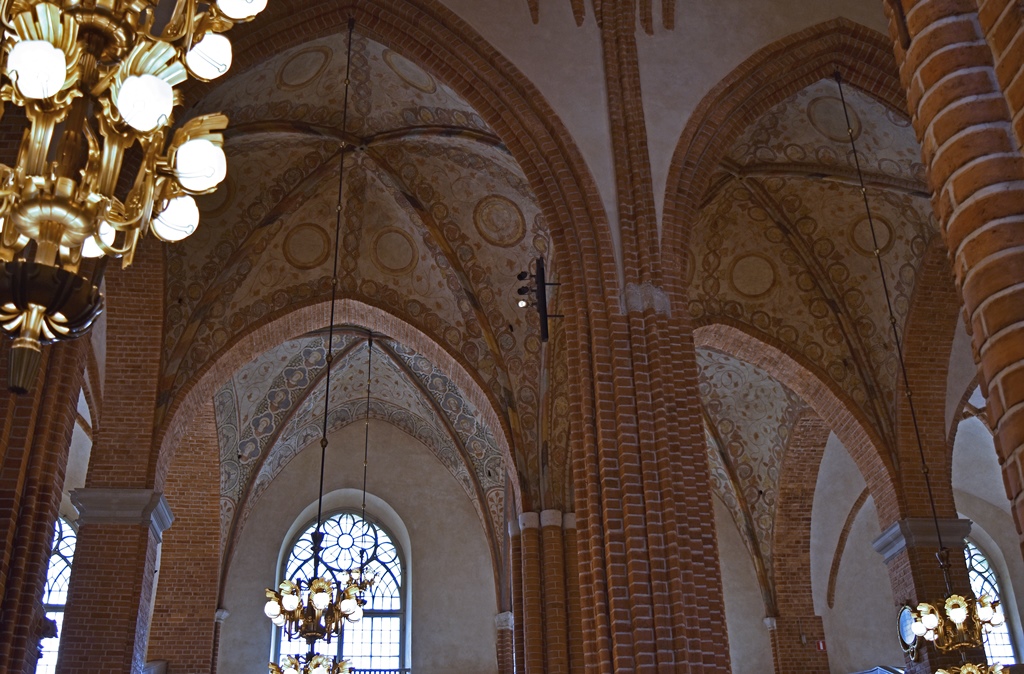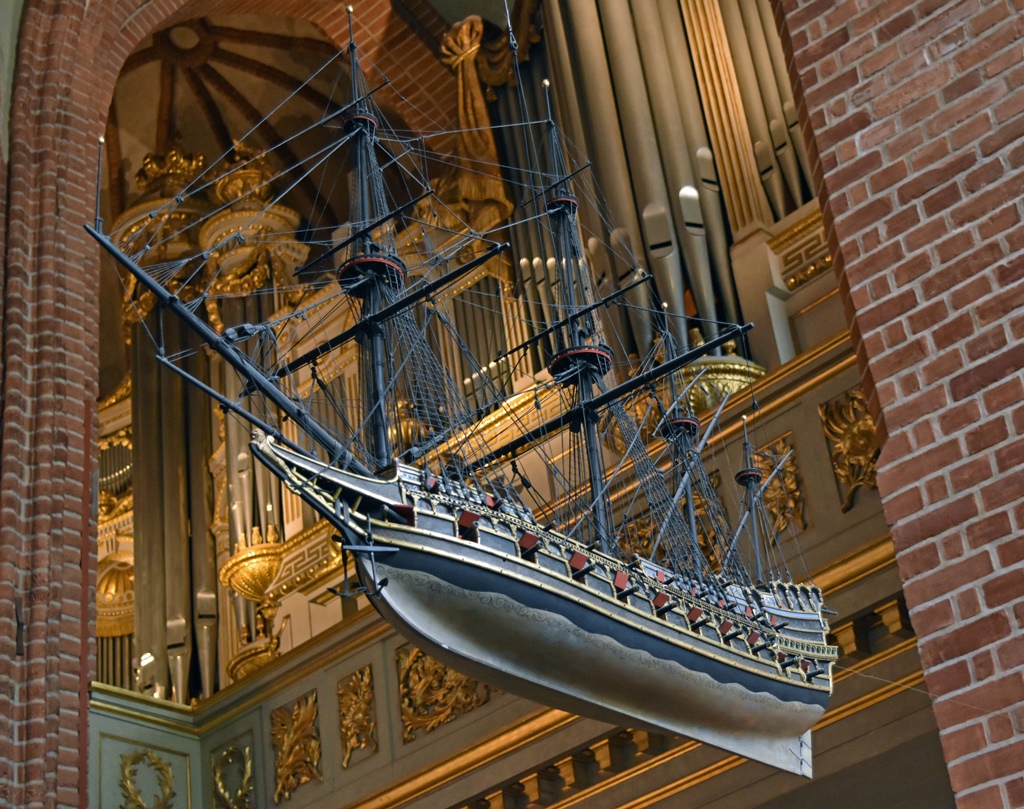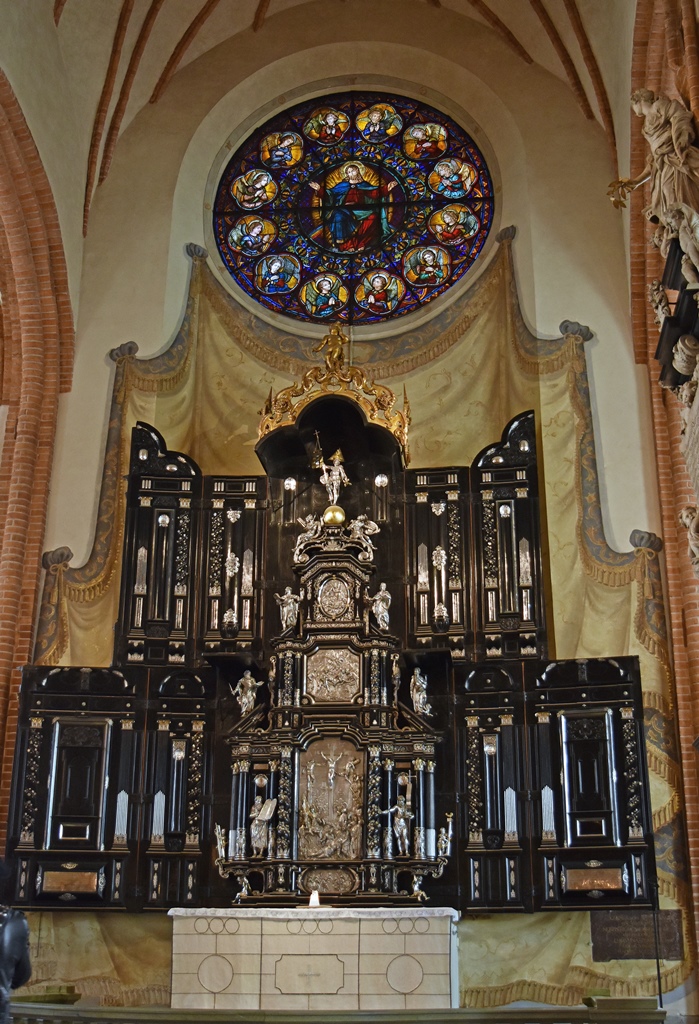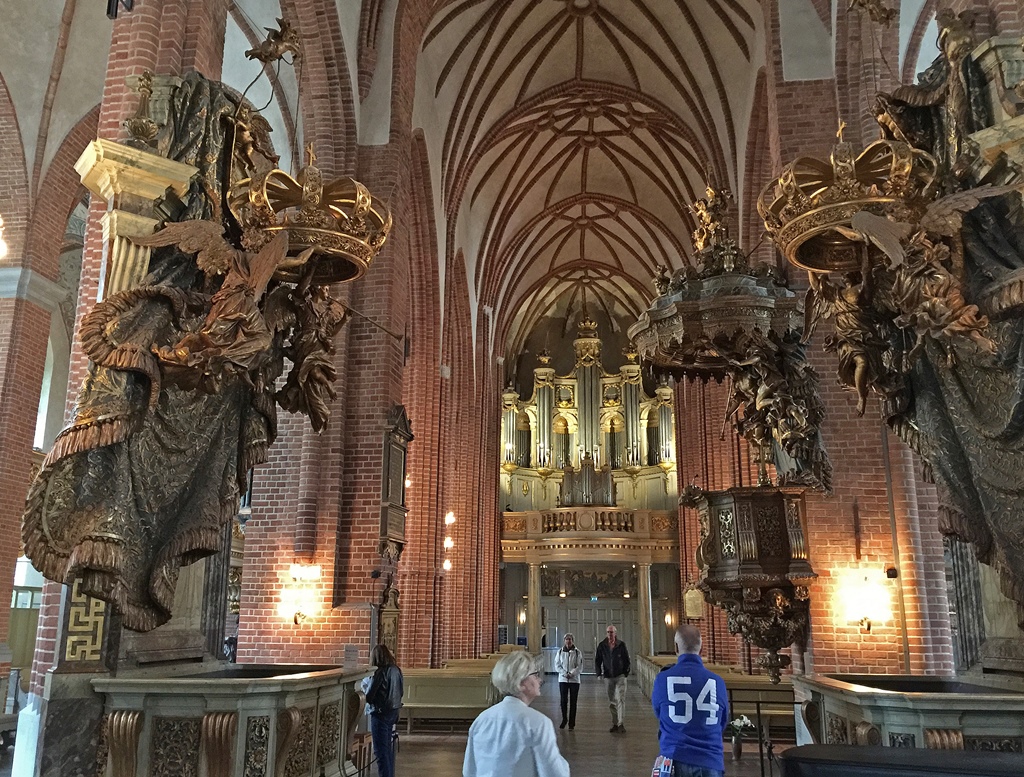Storkyrkan (literally “The Great Church”) is the oldest church in Stockholm, and is sometimes
referred to as Stockholm Cathedral. Its original construction started in the 13th Century, but
it wasn’t inaugurated until 1306. At first, like most Christian churches at the time, it was a
Catholic Church, dedicated to St. Nicholas. But the Protestant Reformation came to Sweden in the
16th Century, and Storkyrkan joined the new Church of Sweden. The Reformation was slow to develop
in Sweden, but is generally considered to have begun in 1527. Gustav Vasa, the Swedish king, had
been on the outs with the Pope (Leo X) since taking the throne following the 1521 War of
Liberation, which separated Sweden from Denmark. The Pope supported Danish King Christian II, who
had triggered the war by perpetrating the Stockholm Bloodbath in 1520, just days after being
crowned King of Sweden (in the Storkyrkan Church, of all places). A major contributor to the
Reformation was Olaus Petri, a church official who had the first-ever Swedish-language mass sung
(also in Storkyrkan) in 1525. Petri also worked on the translation of the Bible into Swedish, and
eventually became Dean of Storkyrkan (somewhere among all this, Gustav Vasa got mad at him and
sentenced him to death, but he got over his anger before the sentence could be carried out).
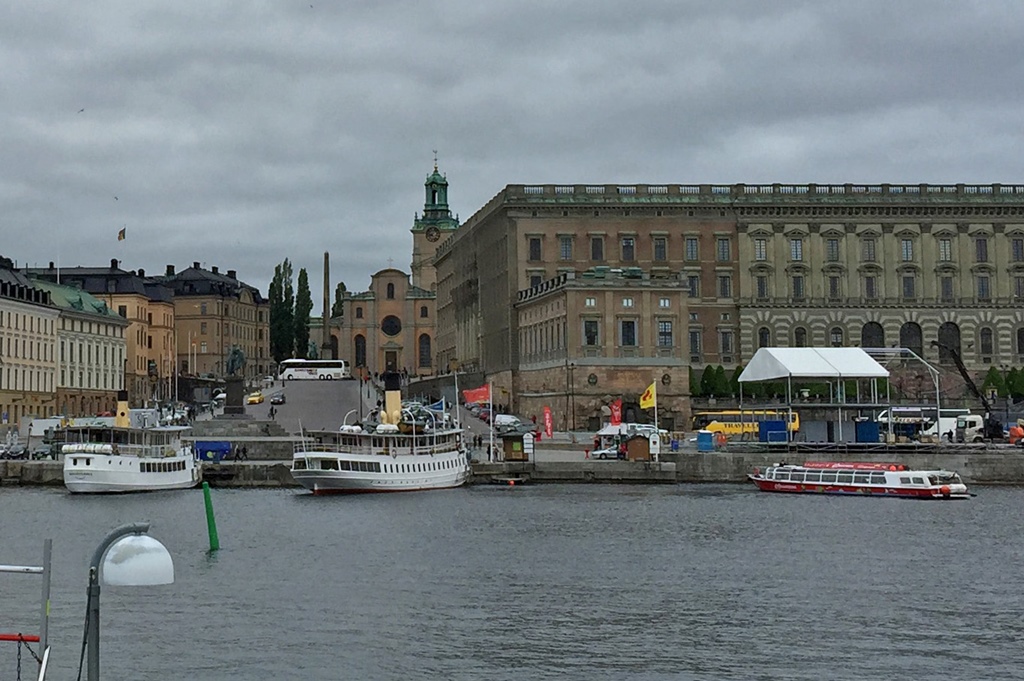
Gamla Stan Waterfront
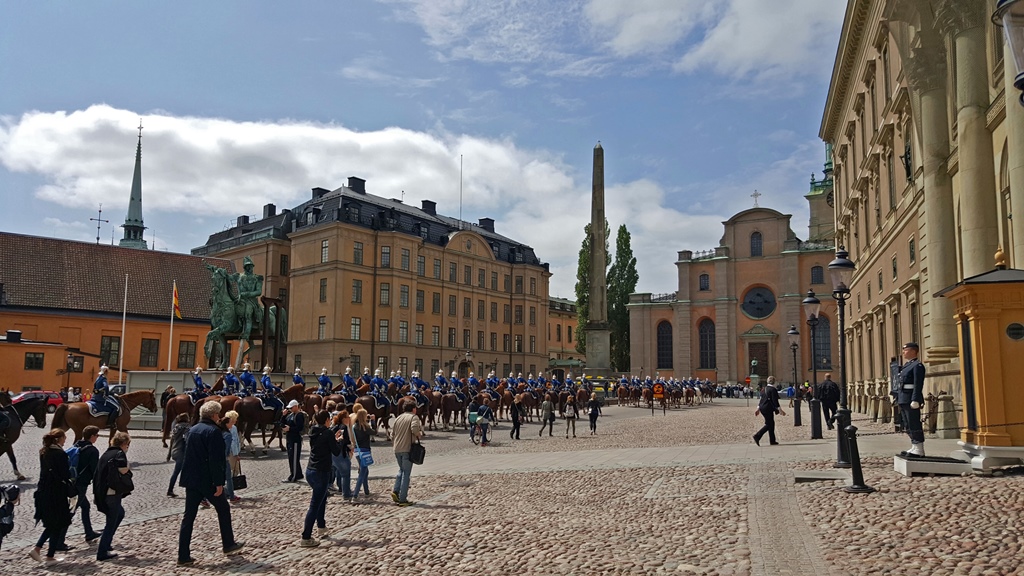
Changing of the Guard with Storkyrkan Church
The Storkyrkan Church occupies a strategic location between the Royal Palace and Stortorget,
Gamla Stan’s main square. It’s undergone several renovations over the centuries, acquiring
its present Baroque exterior in the 18th Century. Several coronations have taken place in the
church, though there was a break following the coronation of Christian II (the Bloodbath left
a bad taste in everyone’s mouth). The last monarch crowned in the church was Oscar II, in
1873. A number of royal family weddings have also been performed in the church. The most
recent of these happened in 2010, between current heir apparent to the throne, Crown Princess
Victoria, and Daniel Westling. Storkyrkan is not generally used for royal family funerals,
but funerals for well-known Swedish personalities are sometimes performed here. An example
would be the 2002 funeral for beloved author Astrid Lindgren, creator of the Pippi
Longstocking stories (Pippi Långstrump in Swedish), among many others. Lindgren’s funeral
was as close to being a state funeral as it could be, without actually being one.
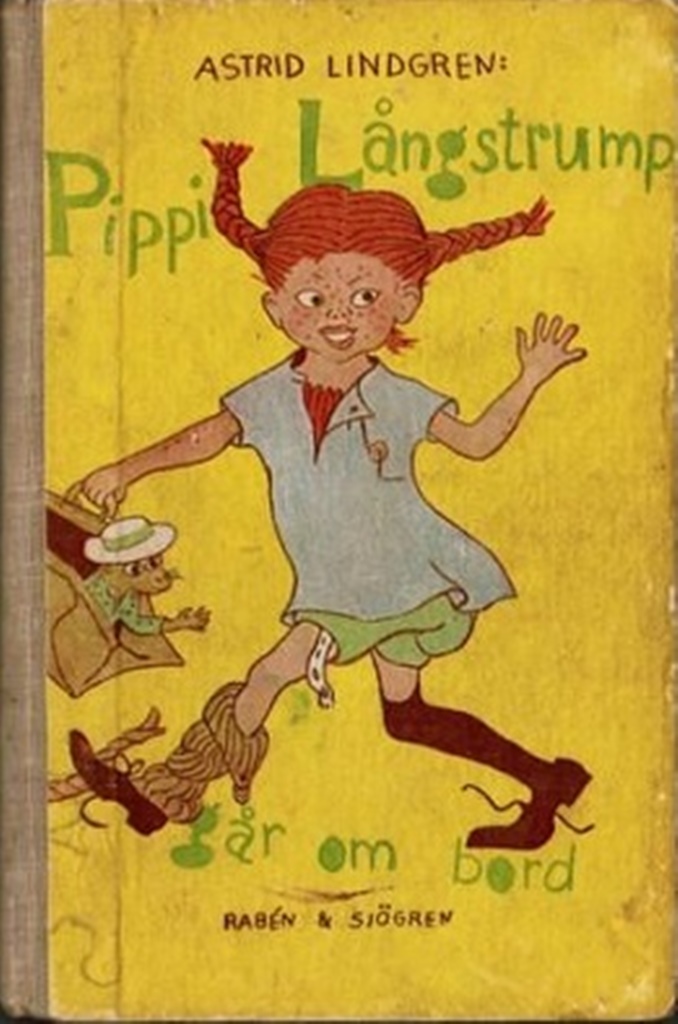
Pippi Longstocking "Pippi Goes on Board" Cover
On the south side of the church, between the church and the backside of the Nobel Prize
Museum, there is a courtyard with some views of the church exterior.
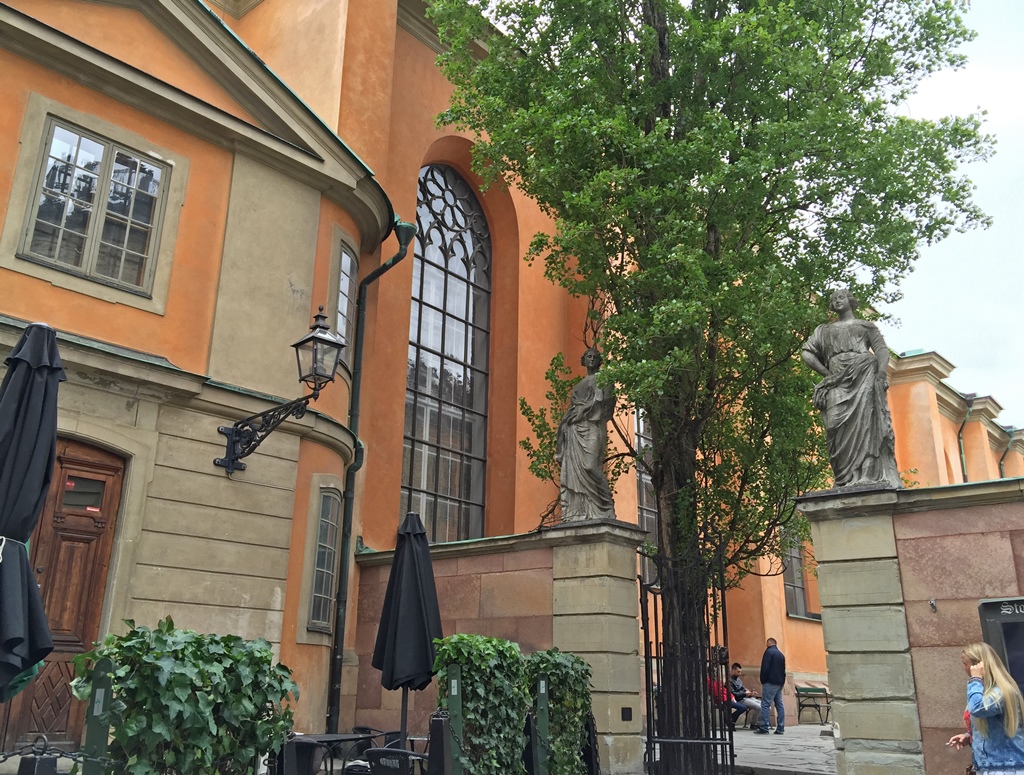
Courtyard Wall
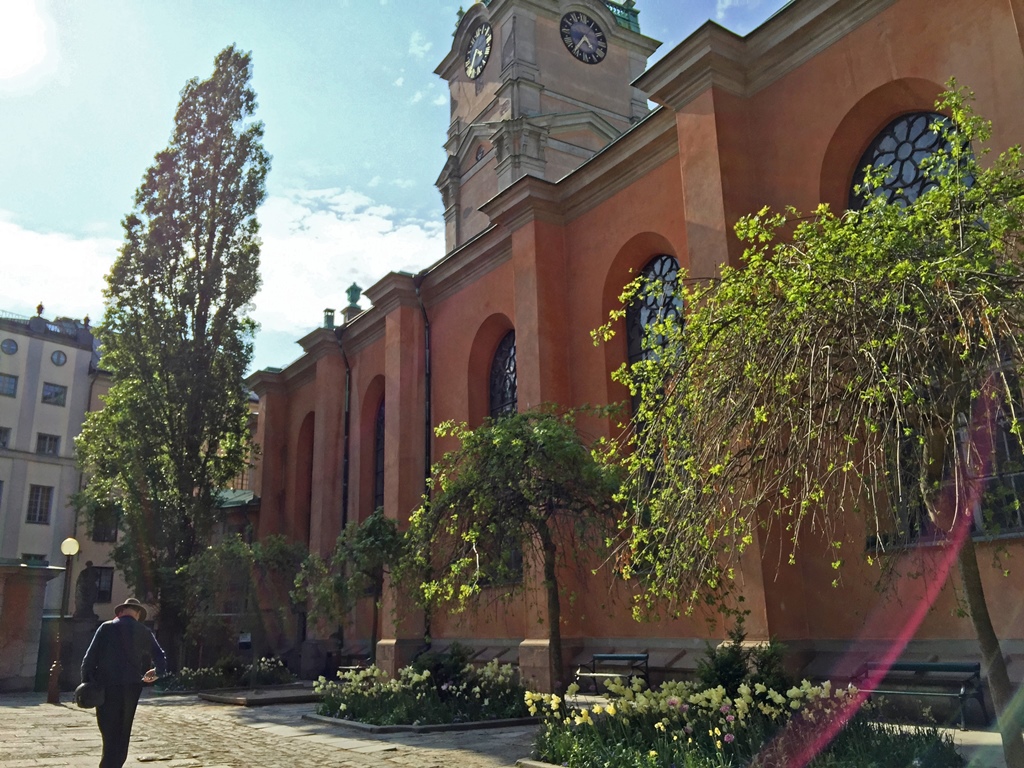
Bob in Storkyrkan Courtyard
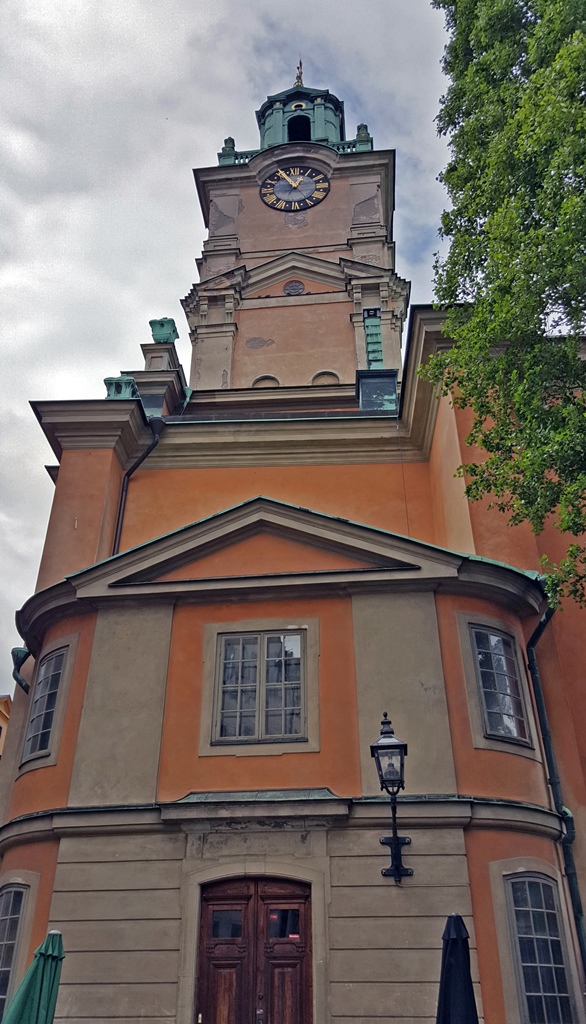
Church Tower
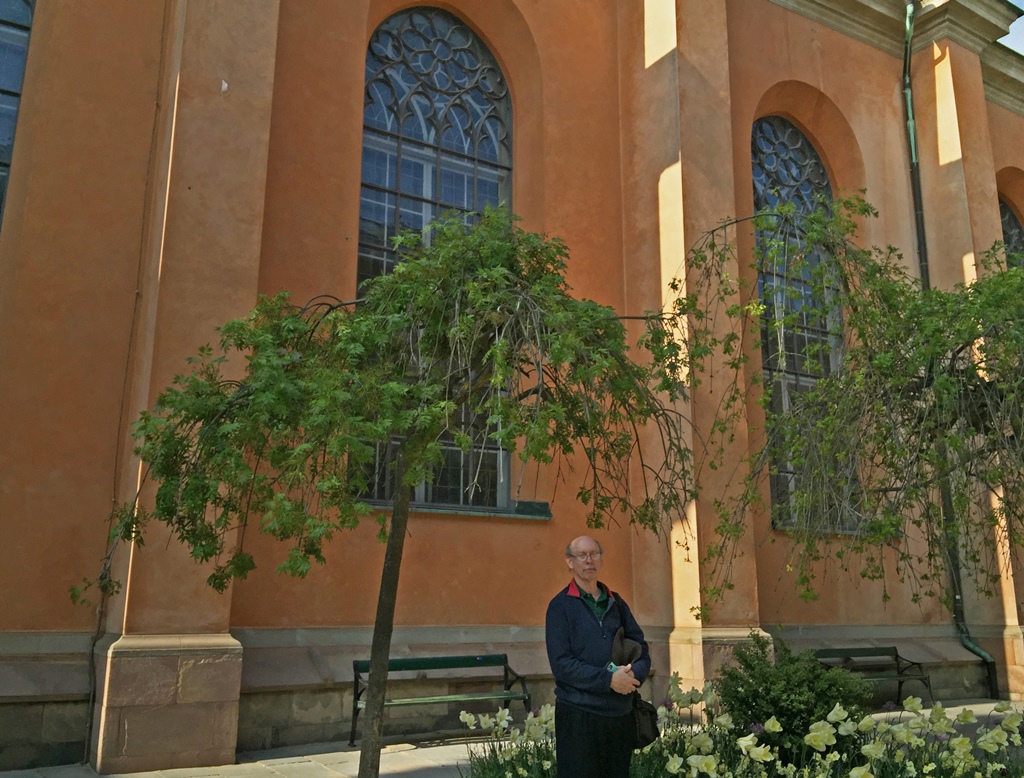
Bob and Storkyrkan Church
On entering the church, one is confronted with a number of impressions, the first being one of
brick. The church was built principally of red brick, which was probably whitewashed at the
time. The whitewash was removed during a renovation in the first decade of the 20th Century.
It was thought that this would give the church a more “medieval” look, even though the church
was probably whitewashed in medieval times. Another impression might be of some interesting
designs painted in some of the vaulting. This has also been restored, though in this case the
designs actually were original, thought to date back to around 1346.
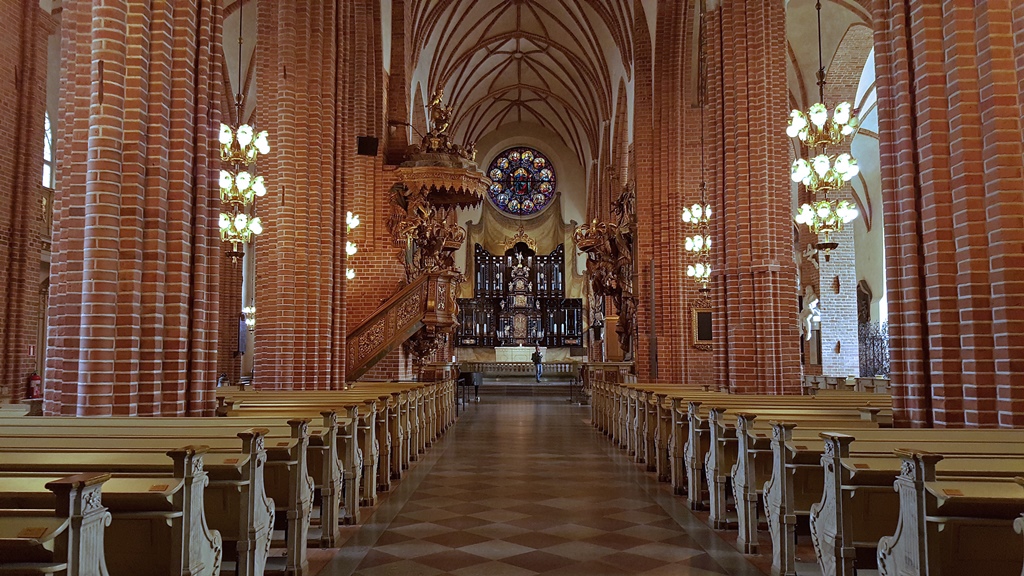
Inside the Church
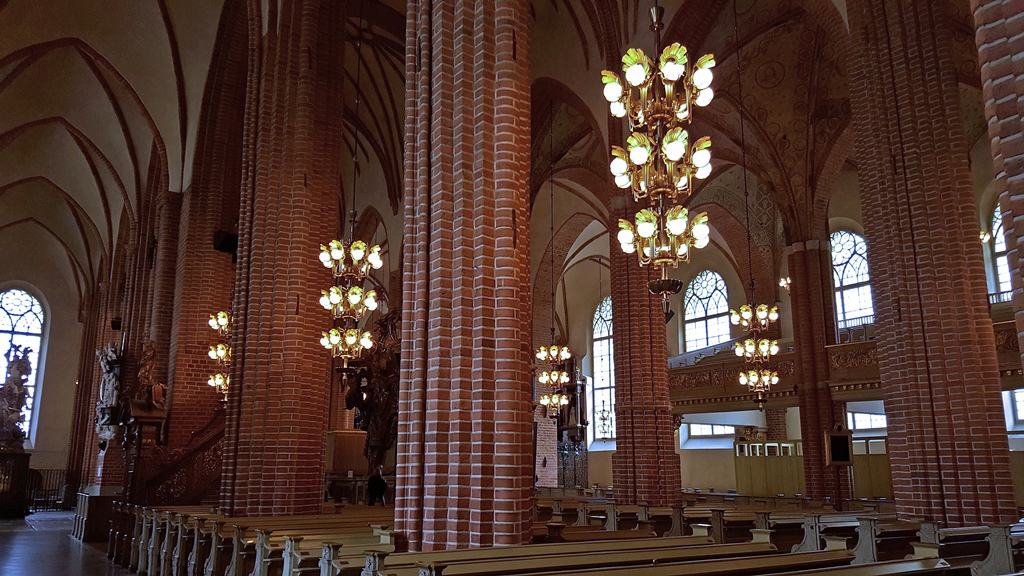
Church from Left Aisle, with Balcony
Vaulting
Many interesting decorative features are to be found throughout the church, as well as an
assortment of monuments, probably commemorating (and paid for by) various aristocrats.
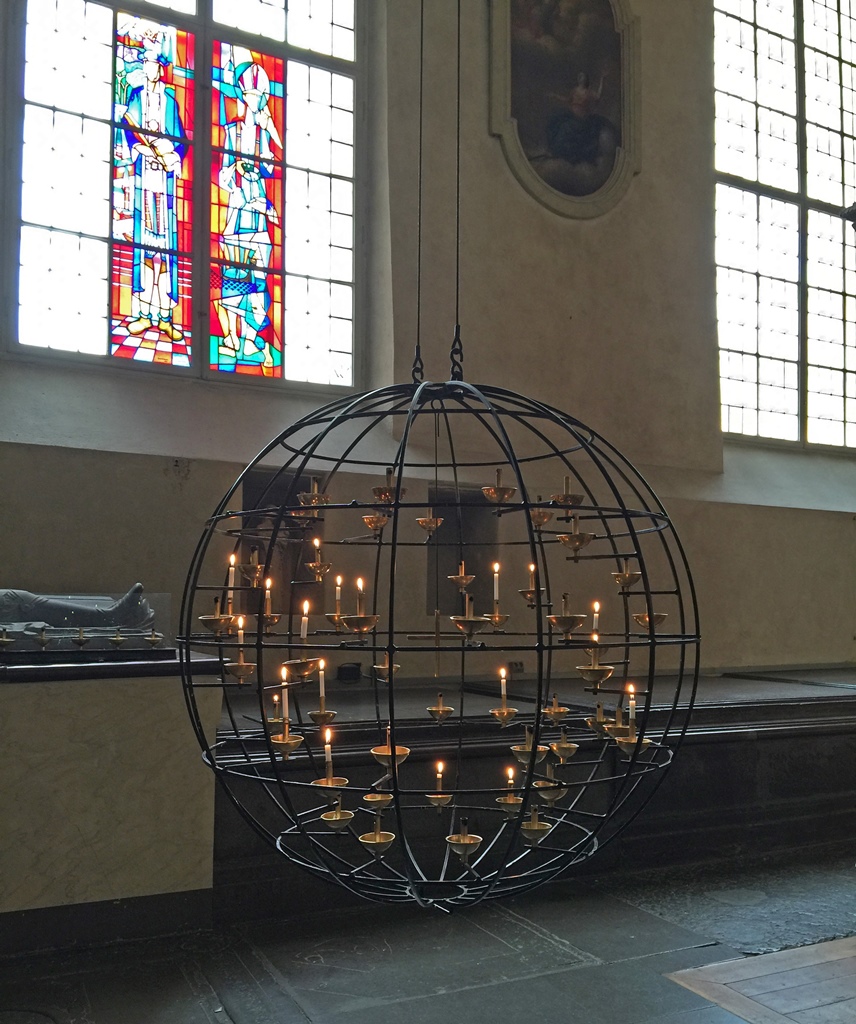
Candle Holder
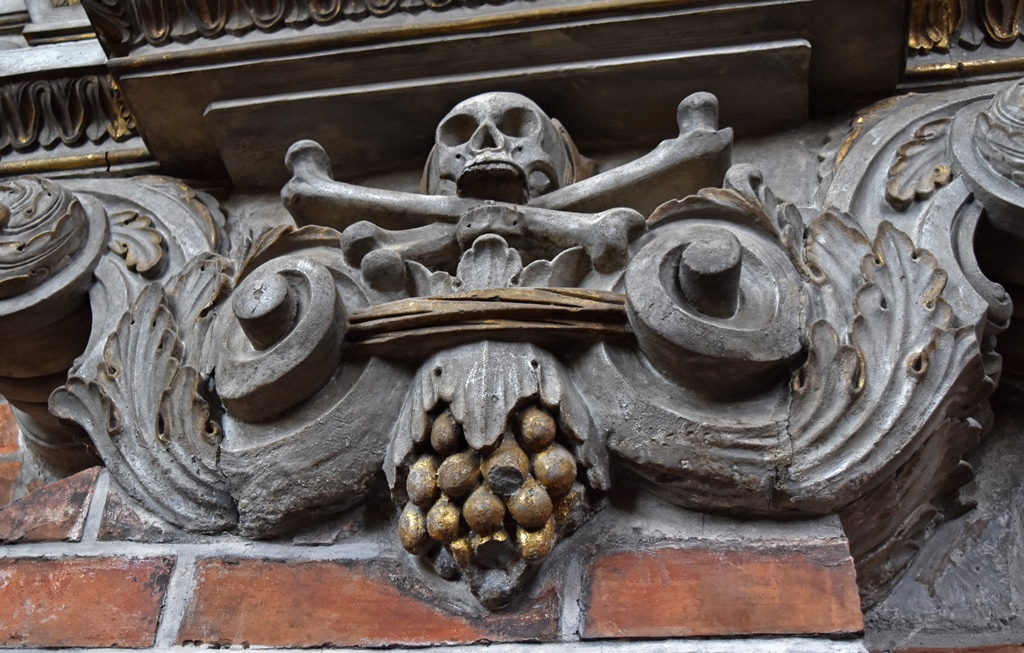
Skull and Crossbones
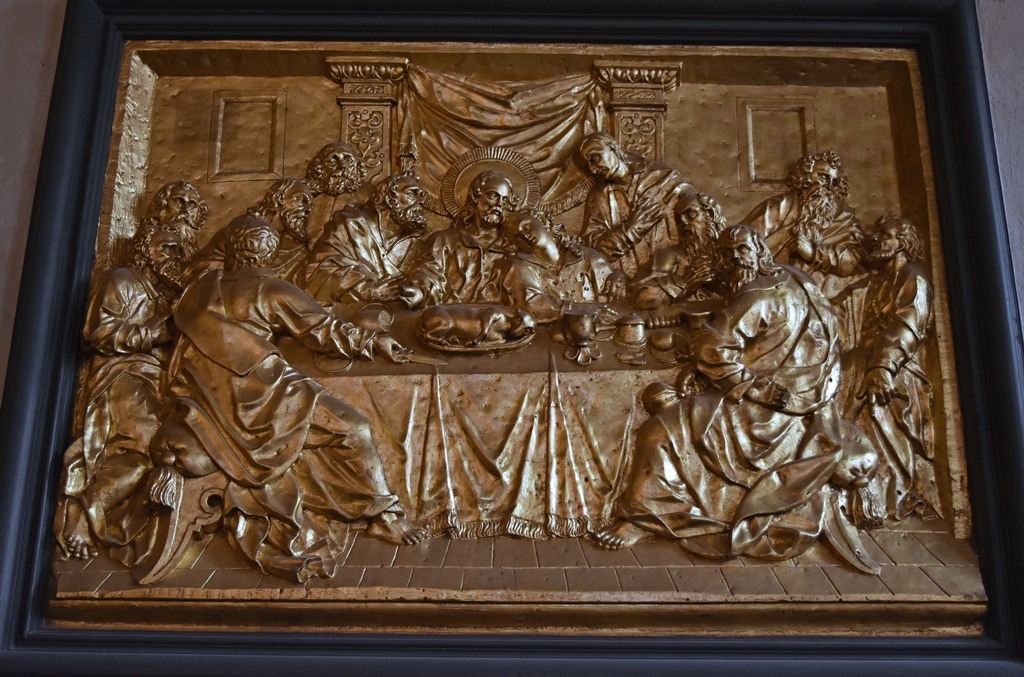
Last Supper Relief
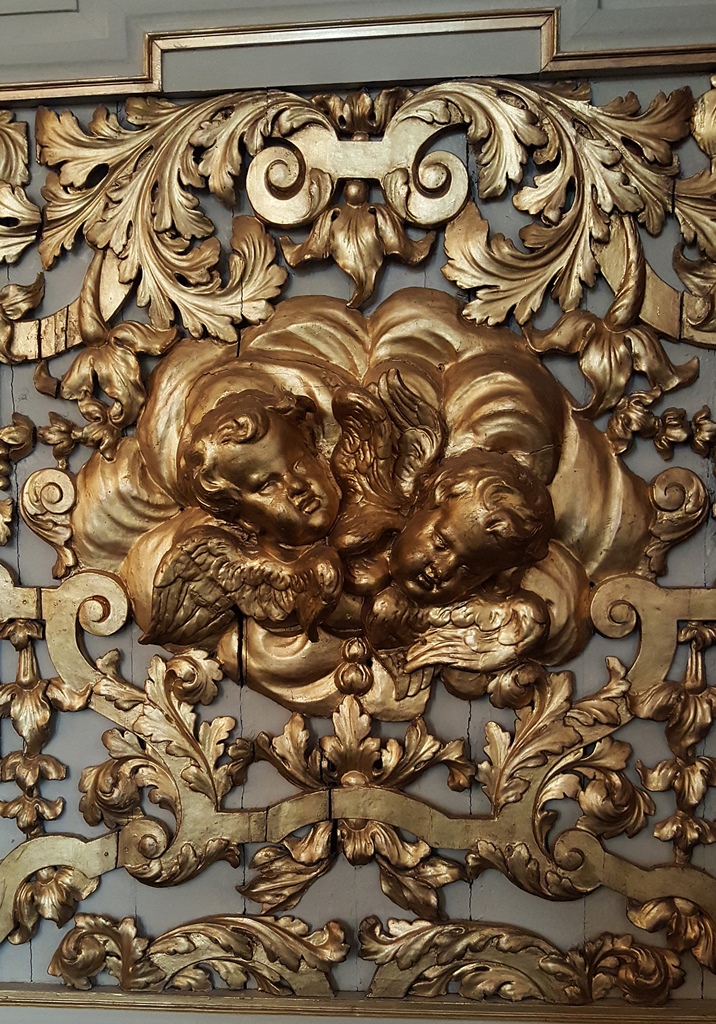
Relief with Putti
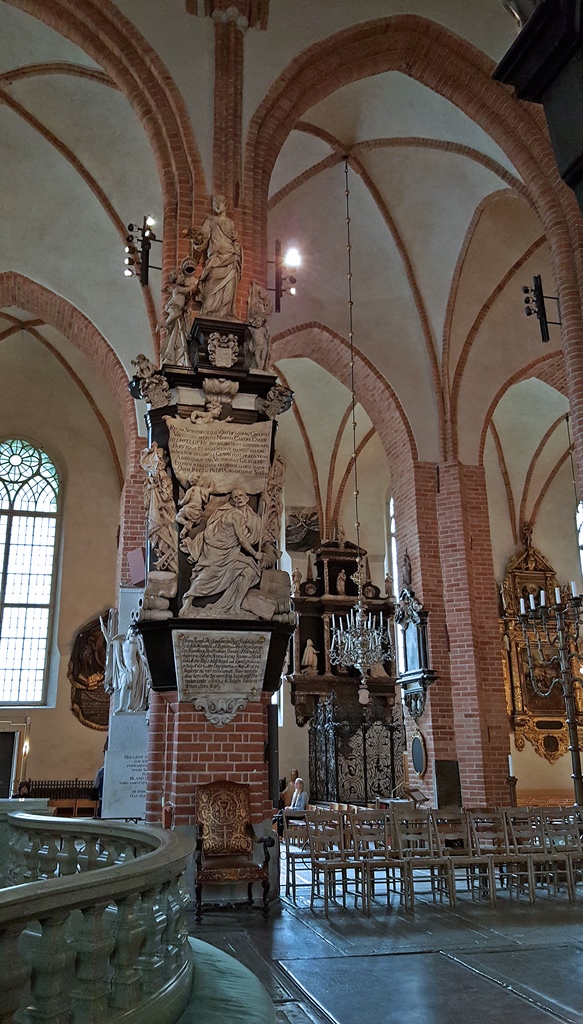
Grundel-Helmfelt Monument
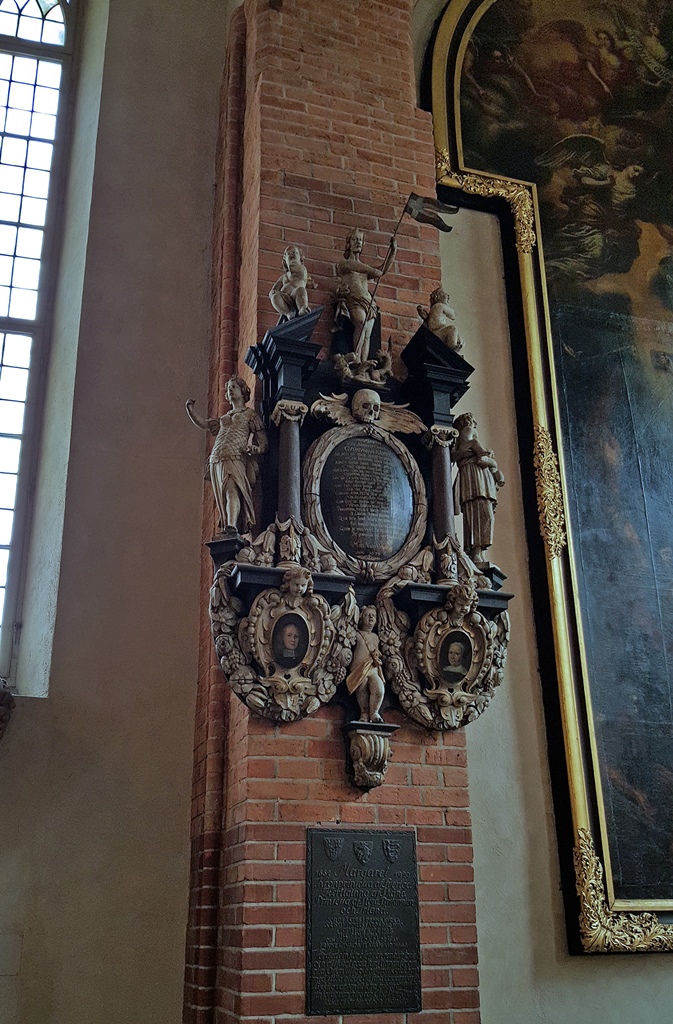
Gudmundus Kähre Monument
One decoration that seemed unusual was a model of a ship, suspended from the ceiling. This
is something called a “votive ship”, and apparently they aren’t that unusual in Scandinavian
countries (they can be found in other parts of Europe as well). Votive ships are gifts to
churches from shipbuilders or seamen, usually either to request good fortune, or to give
thanks for survival of some difficult seagoing episode. This ship is a copy of the original,
which is one of the oldest in the world (17th Century), and is kept in Stockholm’s Maritime
Museum.
Votive Ship and Organ
Probably the most striking artwork in the church is a large sculpture of St. George battling
his dragon. It was commissioned by Sten Sture the Elder, regent of Sweden from 1470 until
1503 (minus four years for the reign of John II, from 1497 to 1501). Sture commissioned the
sculpture to commemorate his victory over the Danish army in the Battle of Brunkeberg (1471).
The sculpture is thought to have been a work by an artist called Bernt Notke, about whom
little is known. Including its plinth, the sculpture is more than 20 feet tall, and is made
of oak, with accents of metal, leather, parchment and moose antlers. There were originally
a number of companion sculptures, but only one survives – it depicts a princess who has her
hands clasped, probably praying to be rescued. The sculpture was inaugurated in 1489.
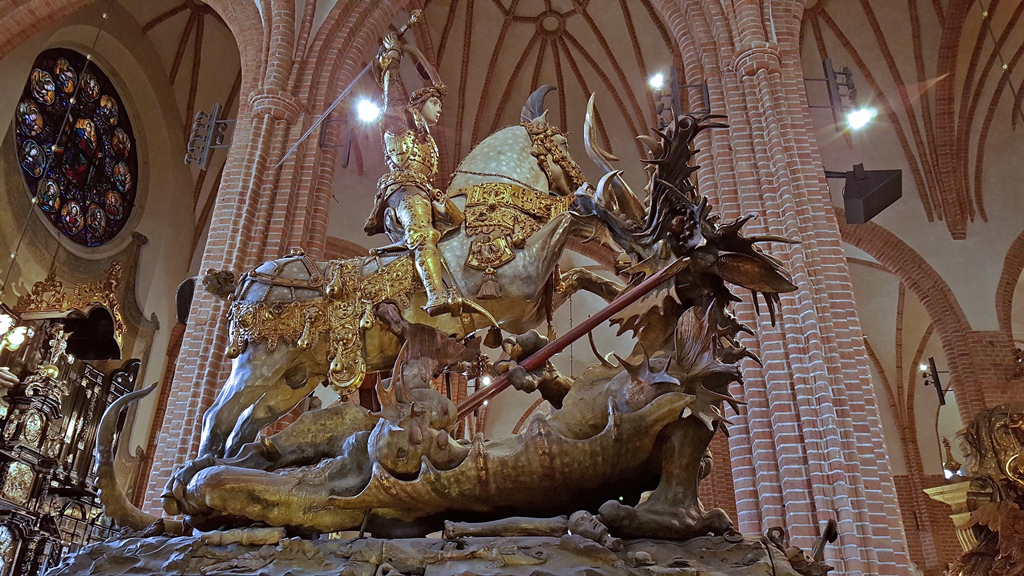
St. George and the Dragon (Bernt Notke, 1489)
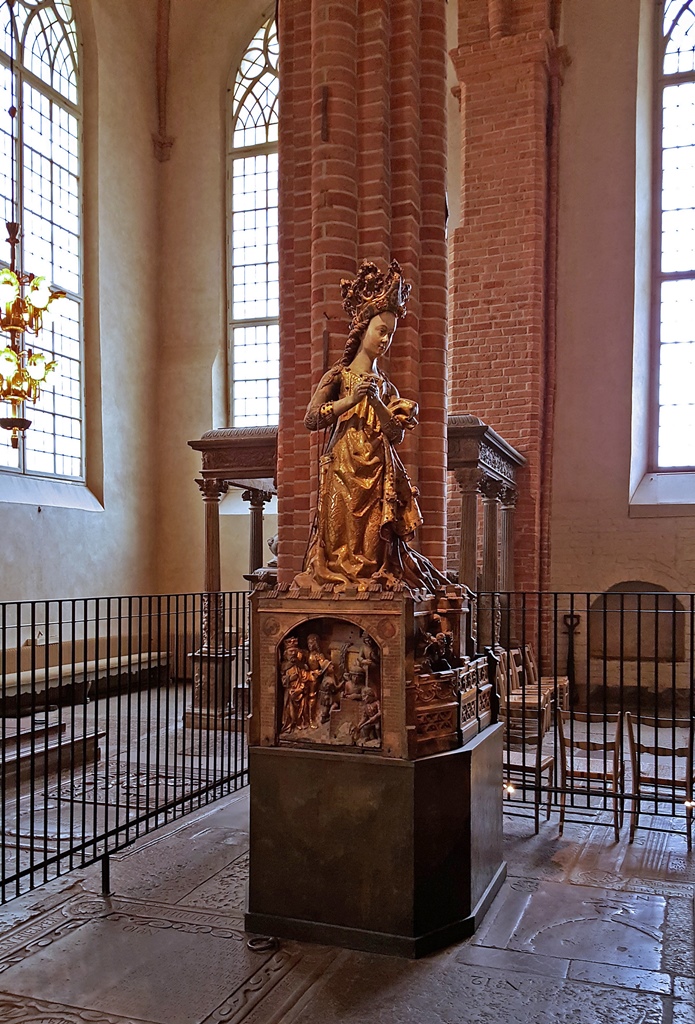
Princess Awaiting Rescue
The church’s main altarpiece is called the “silver altarpiece”, and was donated in 1652.
It came from the workshop of Eustachius Erdmüller in Hamburg, and is made of ebony and silver.
Main Altarpiece (Eustachius Erdmüller, 1652)
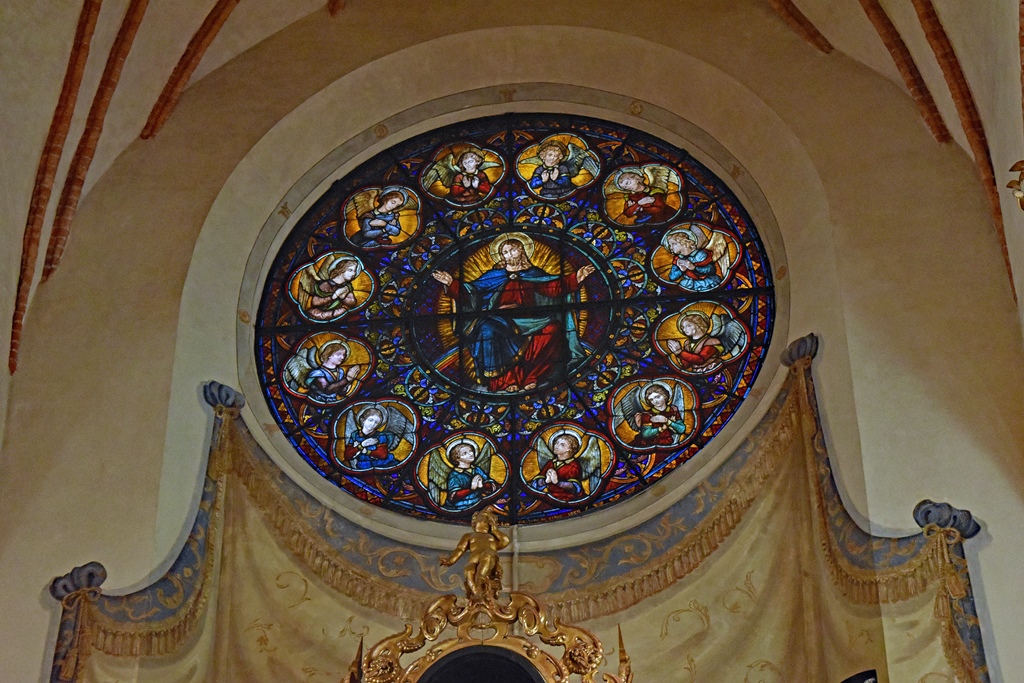
Rose Window (French, 1858)
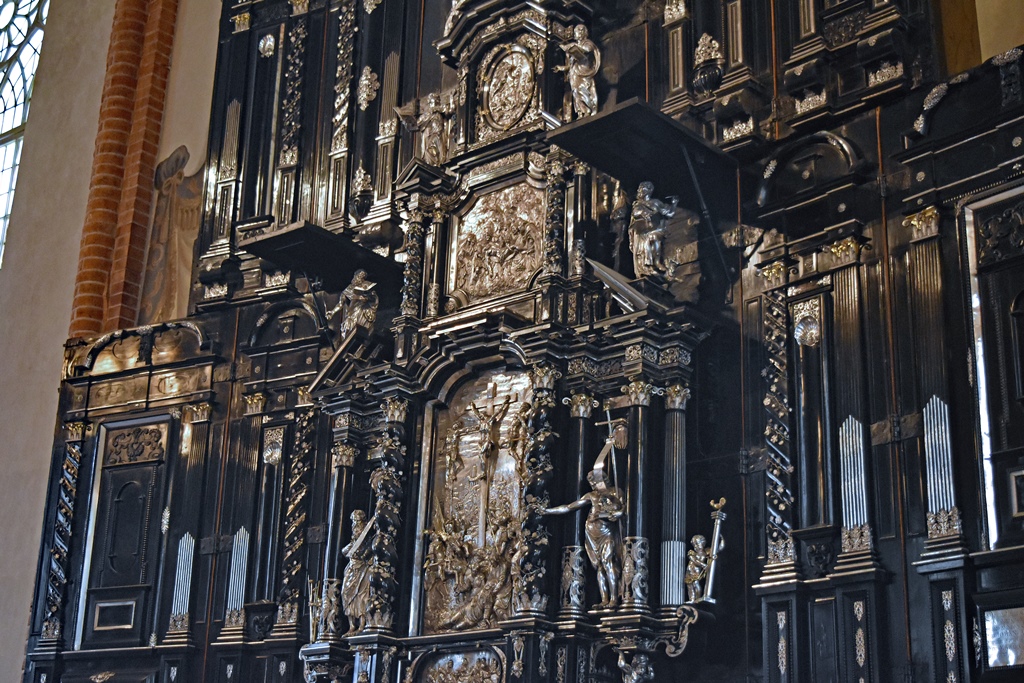
Altarpiece Detail
On either side of the nave there are some elaborate structures which are hard to miss.
They are all made mainly of gilded wood and were constructed between 1698 and 1702, during
the Baroque era, by the same man, Burchard Precht. Two of them are royal pews, conspicuous
seating areas bookending the nave which are reserved for the royal family (you can tell by
the giant golden crowns on top of them). They were built by Precht but designed by
Nicodemus Tessin the Younger. Precht designed the third structure, however. This is the
church’s pulpit.
Royal Pews, Pulpit and Organ
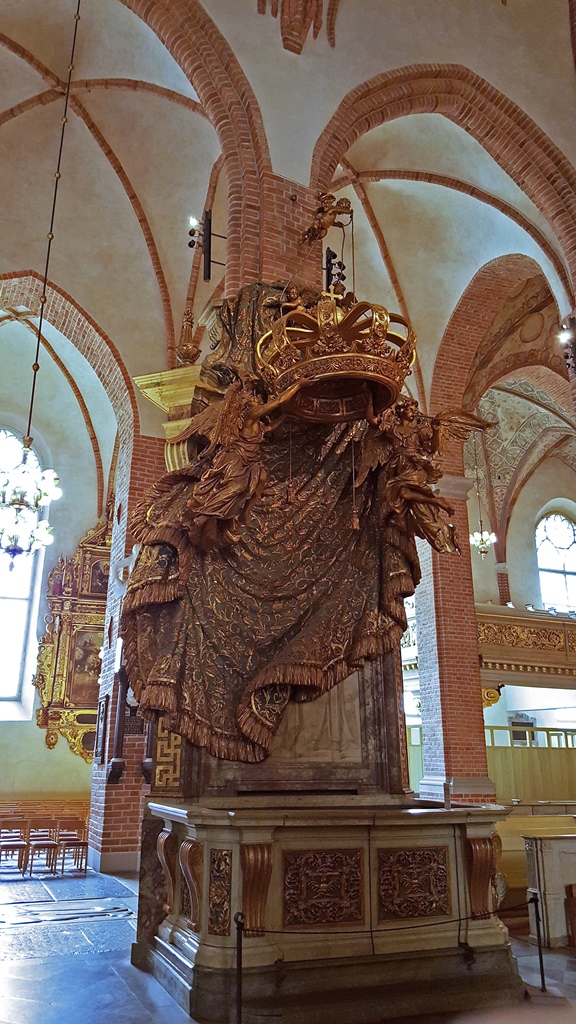
Royal Pew
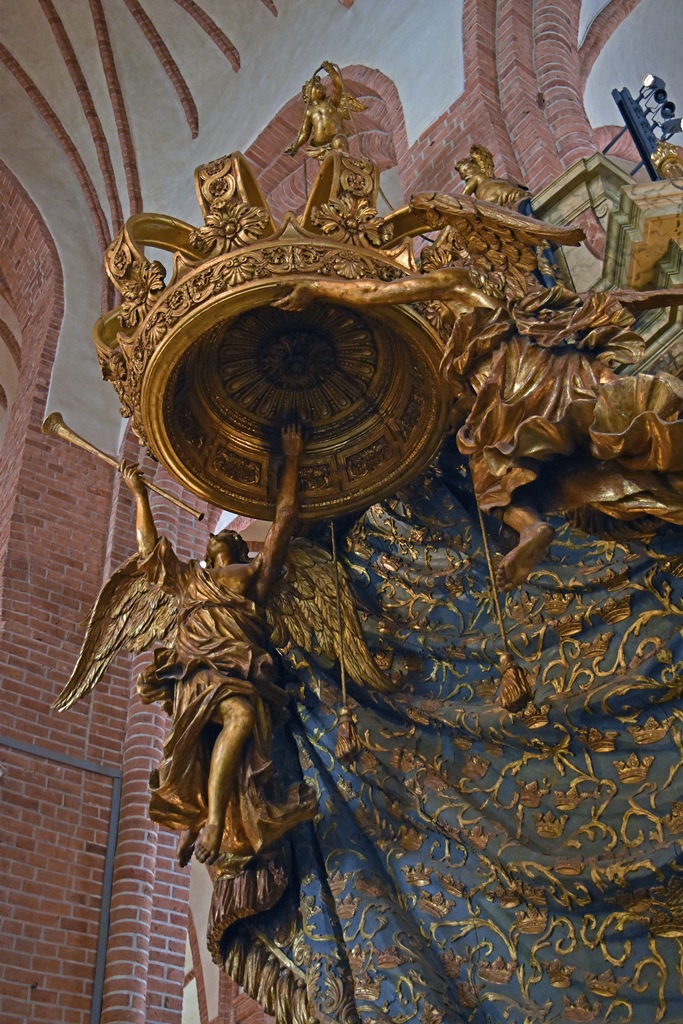
Royal Pew
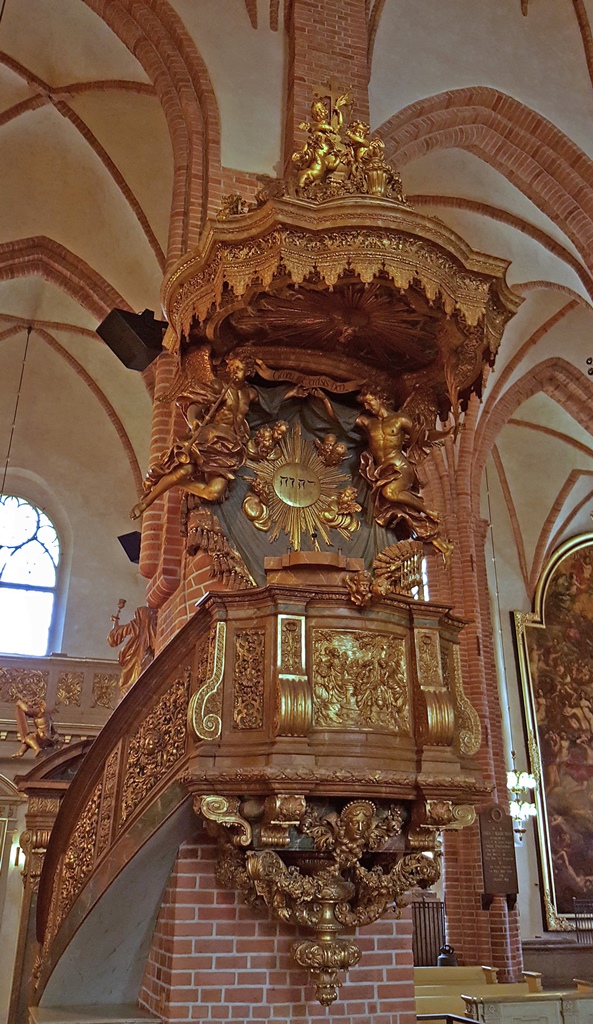
Pulpit
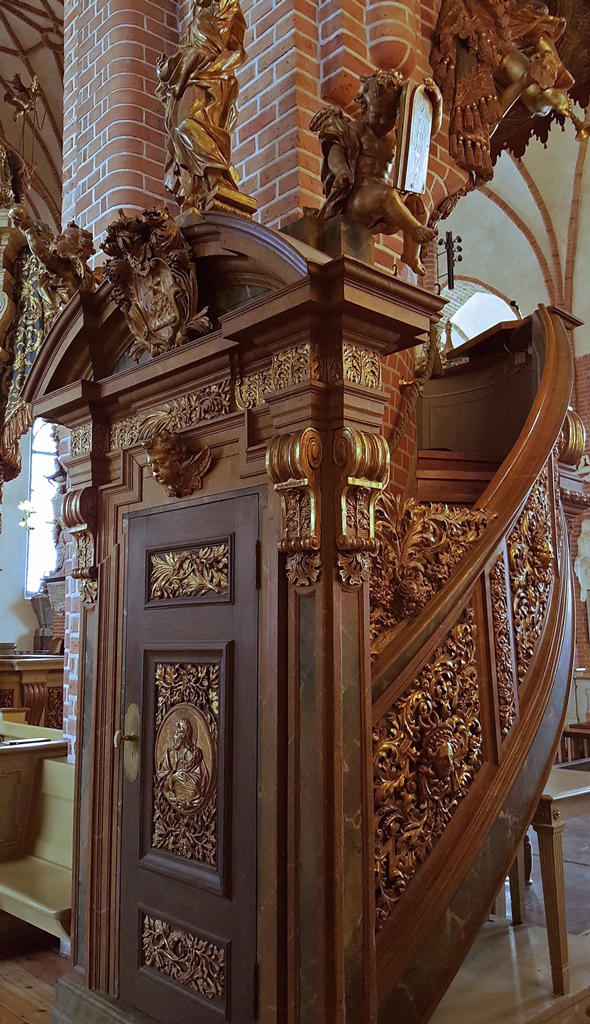
Pulpit Entrance
The church’s organ was installed in 1960, but its façade dates back to 1789.
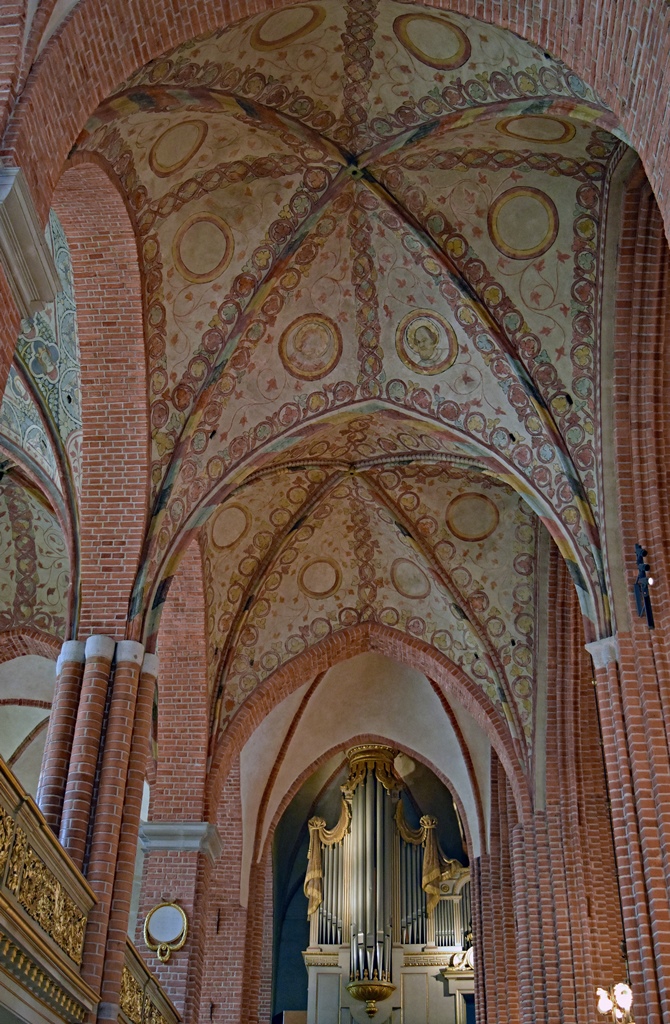
Vaulting and Organ
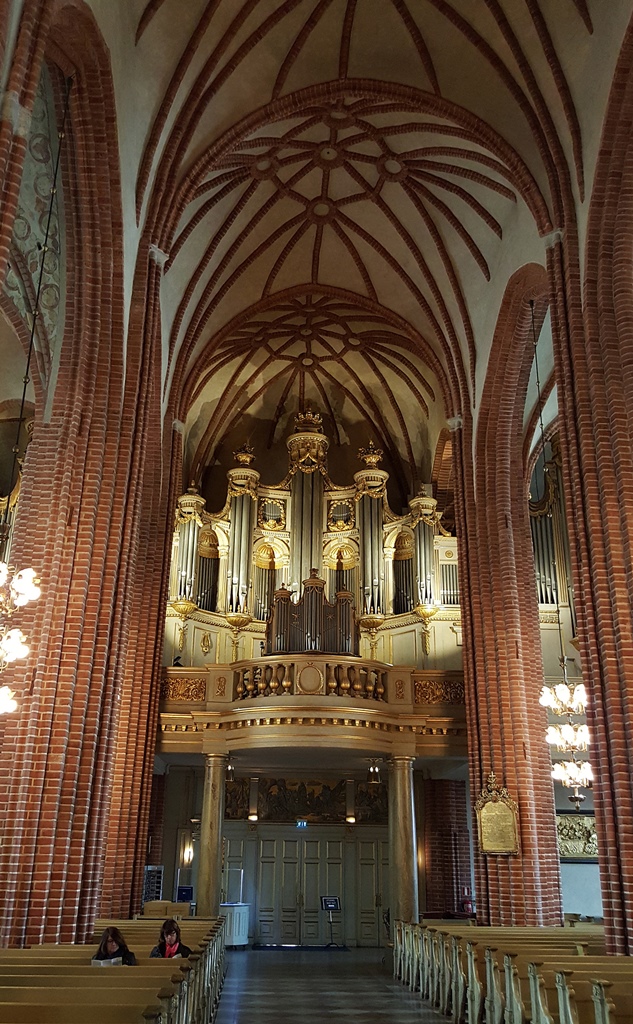
Organ
Also found in the church is a painting called Vädersolstavlan (Swedish for “The
Sundog Painting”). A sun dog (also called a parhelion) is an atmospheric
phenomenon in which a halo can be seen around the sun, possibly with bright spots
appearing at points along the halo. Sun dogs are created through interaction of
sunlight with ice crystals that are suspended in the atmosphere (moon halos are a
nighttime version of this). Vädersolstavlan depicts the occurrence of such an
episode which was observed in Stockholm on 20 April 1535. It was painted that same
year, commissioned by Reformation figure Olaus Petri, during a time when Sweden was
breaking up with both Denmark and the Catholic Church, and when King Gustav Vasa was
clamping down ruthlessly on conspiracies, both real and imagined. Petri was disturbed
by the sun dogs that were observed, interpreting them as a sign from God whose meaning
he could not decipher. He thought it possible that Sweden was being told that it was
heading in the wrong direction. This led to a falling out between Petri and the king,
and Petri’s eventual death sentence (which was later rescinded).
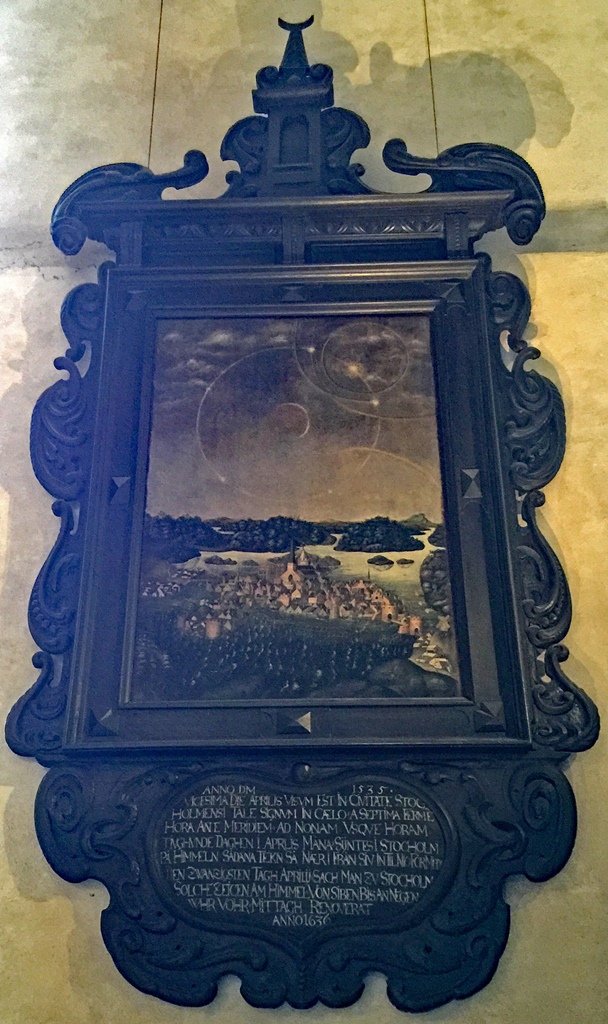
Vädersolstavlan (1636), with Frame
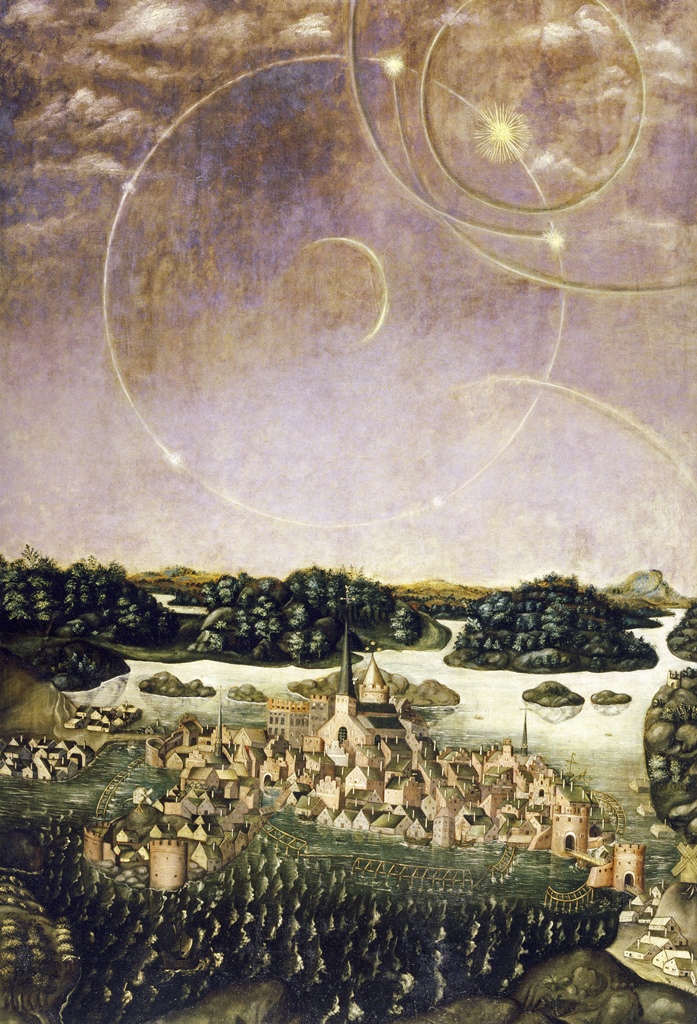
Vädersolstavlan
Because of all this, the painting is considered to be a significant artifact in the history
of Sweden. And not only for these reasons – the painting also shows a reasonably faithful
depiction of Stockholm as it appeared in 1535. It’s not photographically accurate – the
sizes of important buildings such as the Storkyrkan Church and the Tre Kronor Castle are
exaggerated, but most of the buildings’ details are considered to be accurate. The
depictions of the sun dogs are not considered particularly accurate, though. For one
thing, sun dogs from different times of the day are all shown on the same painting. They also
necessarily had to be painted from memory, and a lack of understanding of the phenomenon
led to many details being depicted incorrectly. But the painting does make the case that
something very unusual happened on 20 April 1535.
An additional detail about the painting in the Storkyrkan Church: it’s not the original
painting. This is a copy of the original, painted by an artist named Jacob Elbfas in 1636.
This was verified (from the age of the wood) during a restoration of the painting in
1998-99. It’s not known what happened to the original, but it appears to be lost. But
the 1636 copy is thought to be as accurate a copy as could be made in 1636, and therefore
remains historically significant.
Eventually, Nella got to a point where she was ready to move on to see something else.
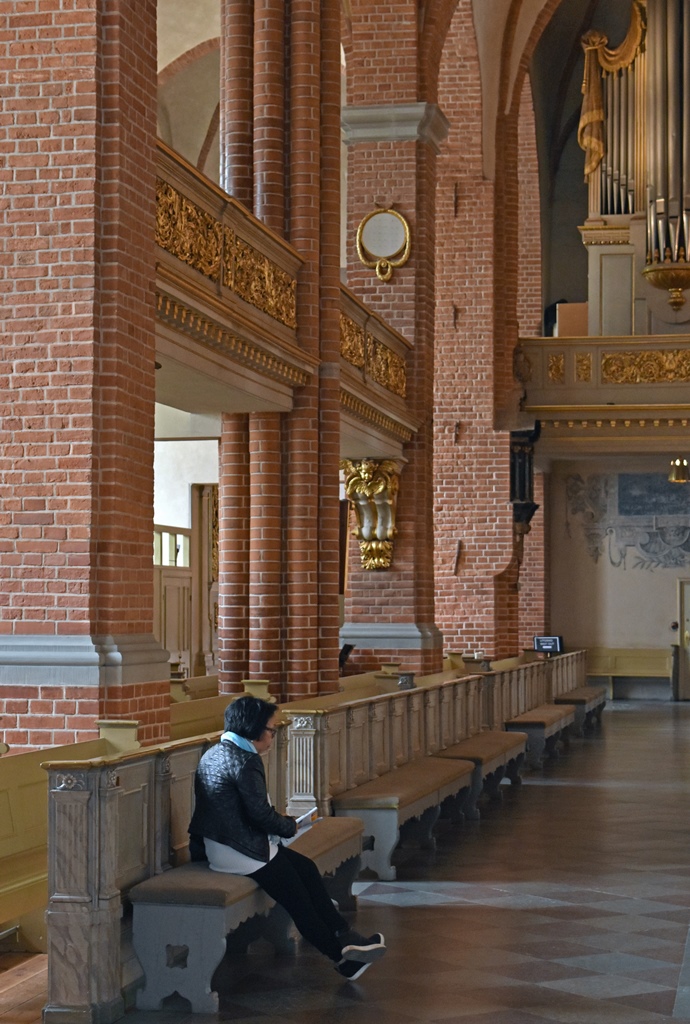
Nella Taking a Break
With much left to see and not much time to see it in, I had to agree, and we left the
church to find lunch and take one more look around Gamla Stan.
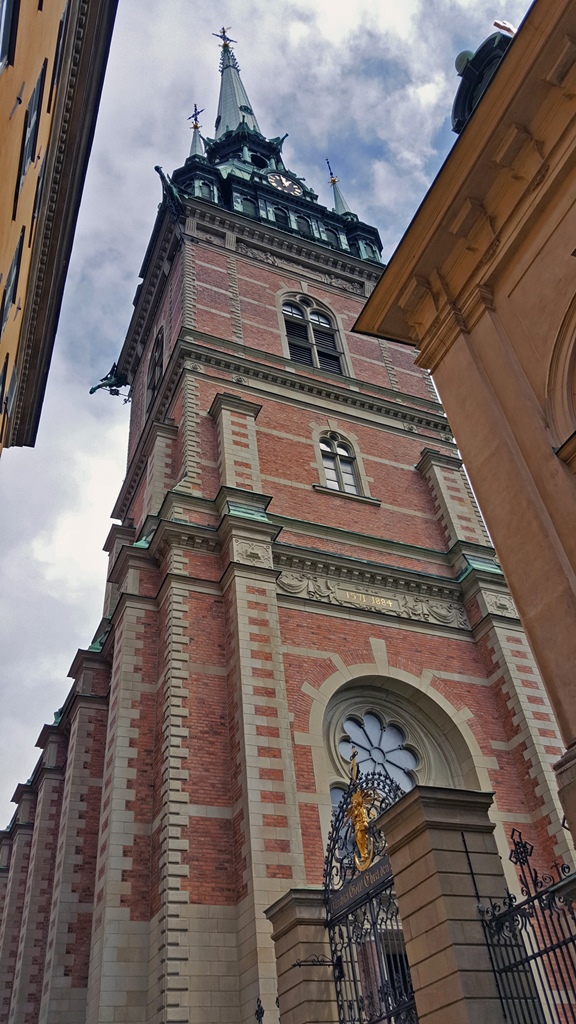
German St. Gertrude Church Tower
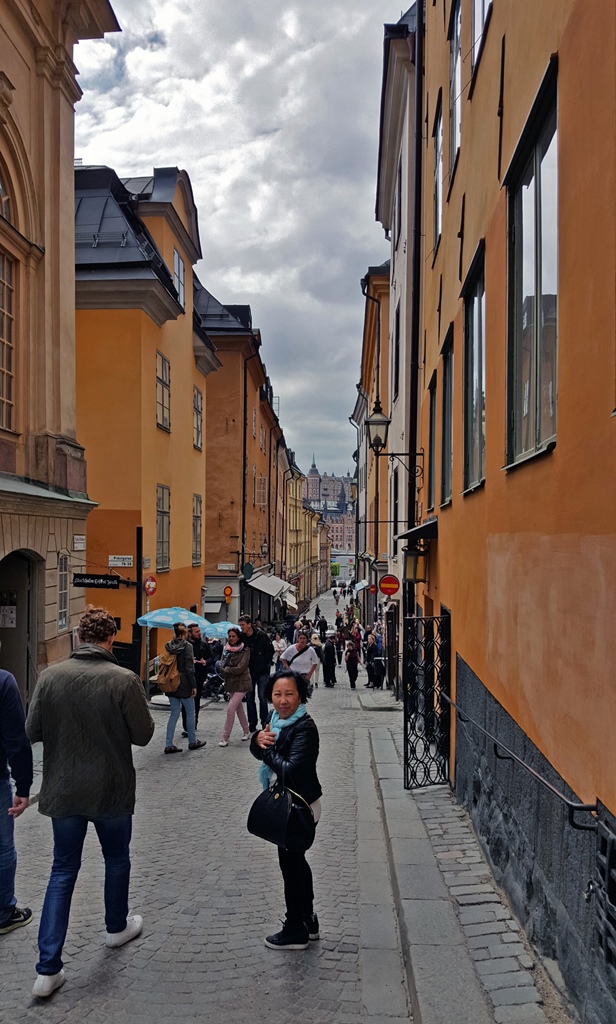
Nella on Tyska Brinken
With our remaining time in the day (and in Stockholm), we judged that we would be able
to visit one more of the city’s main attractions, and in accordance with good reviews we’d
seen in the guidebooks, we ended up heading for Stockholm’s Museum of Modern Art.










